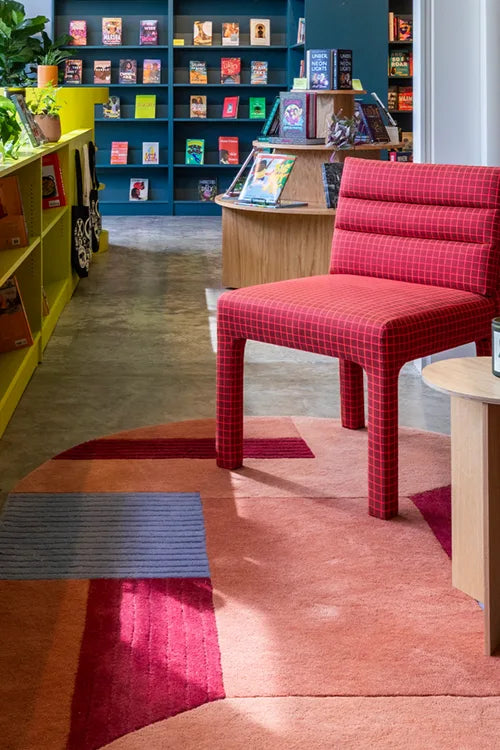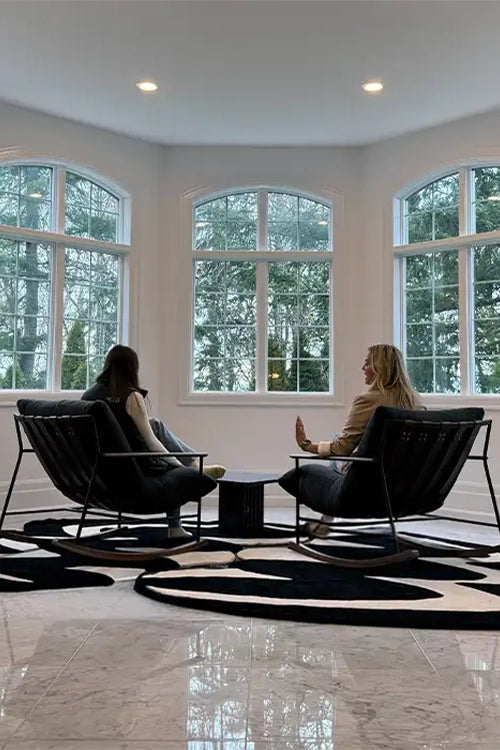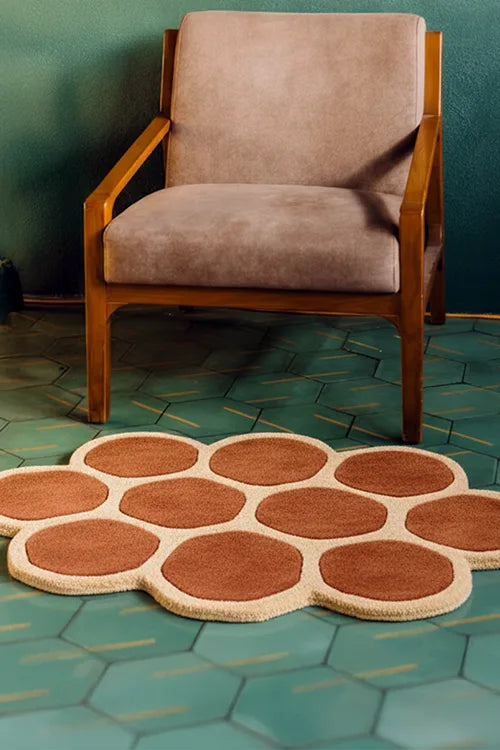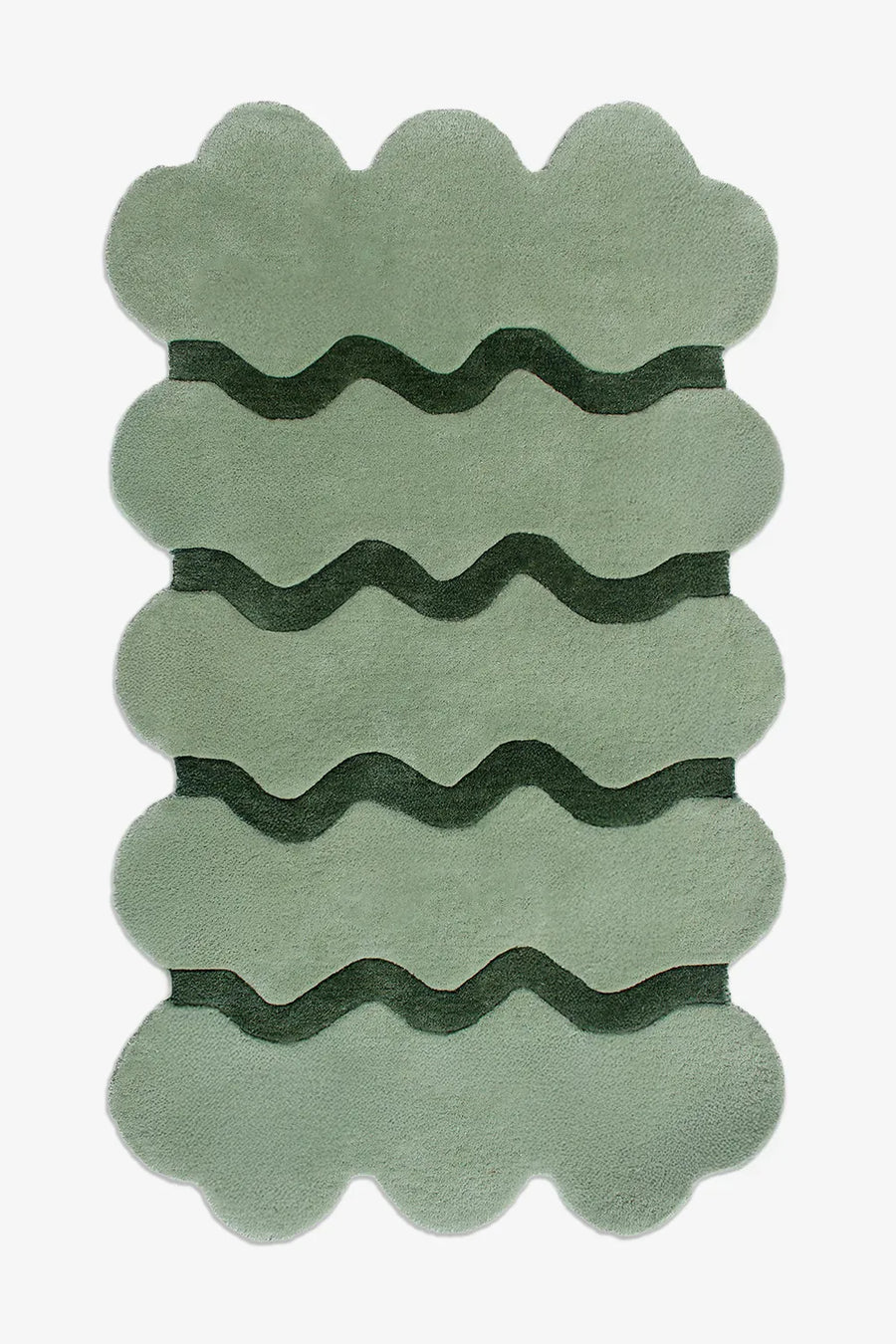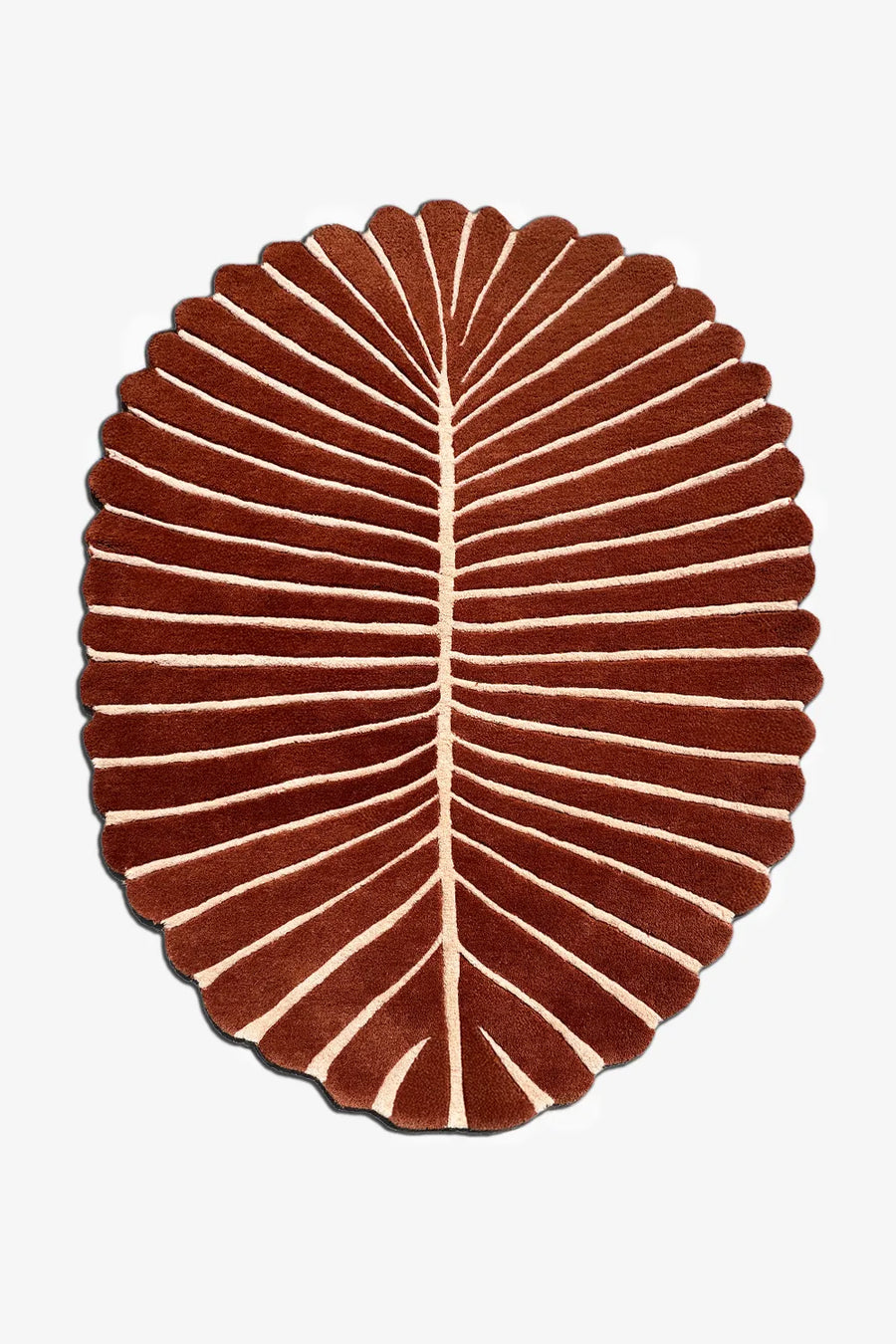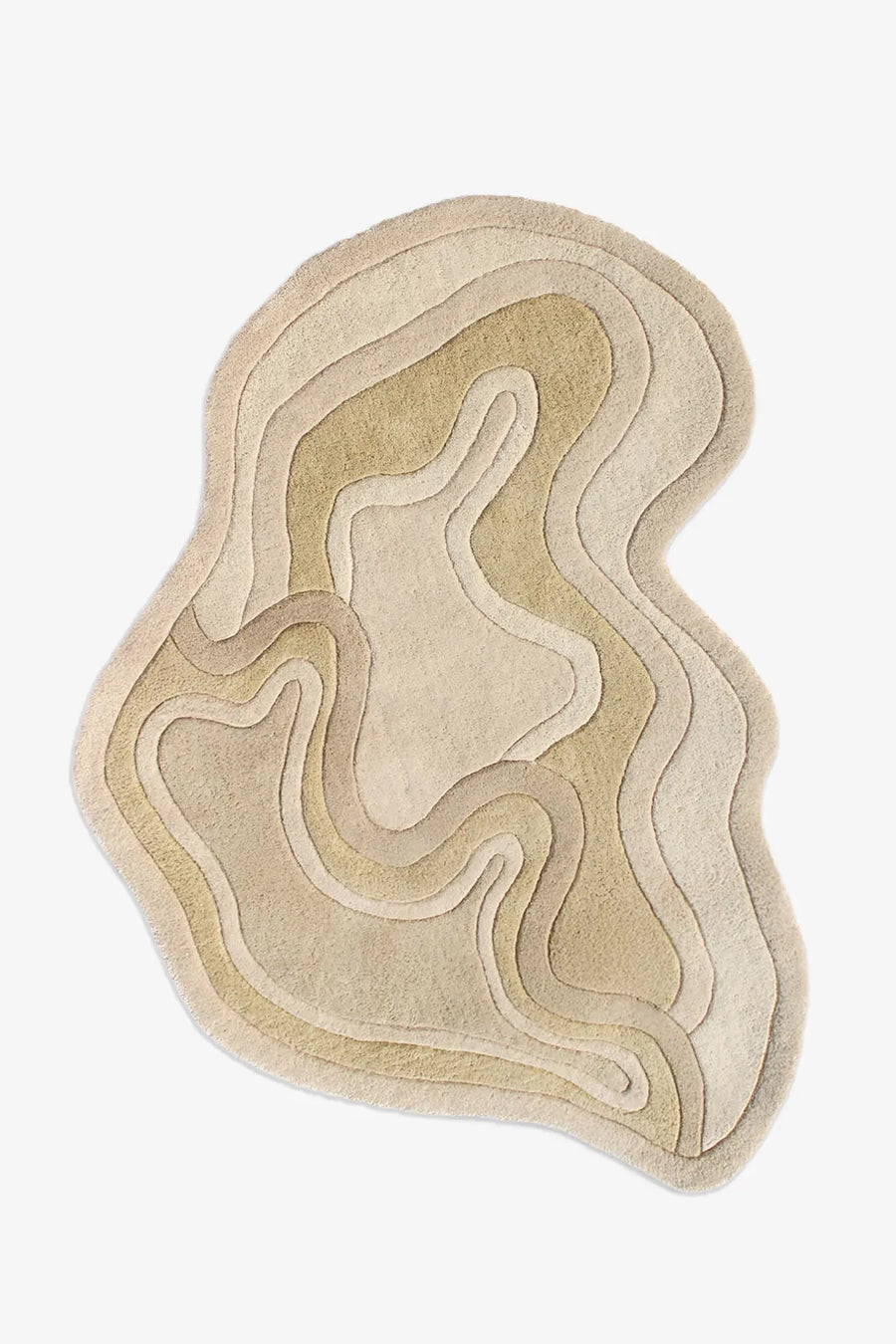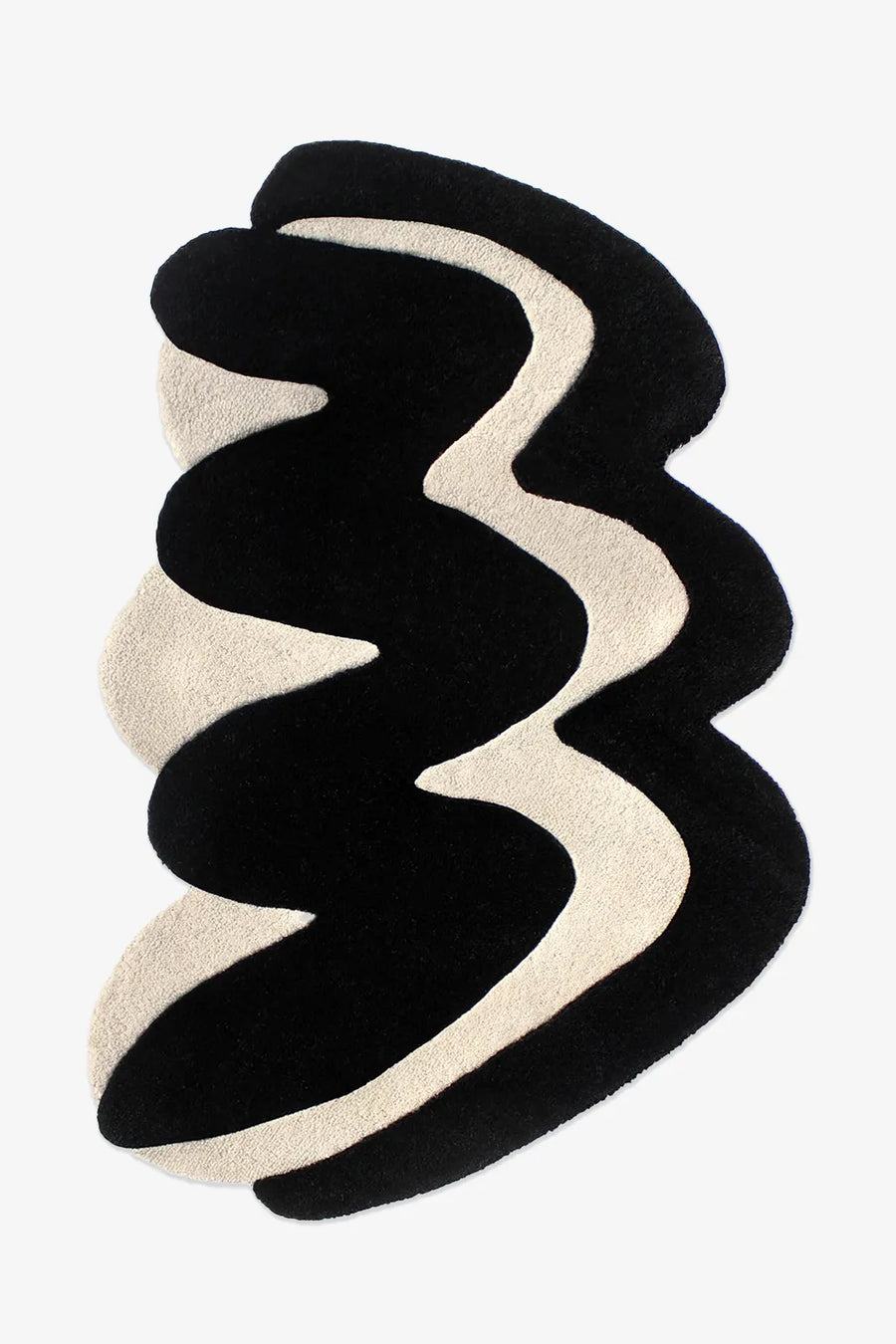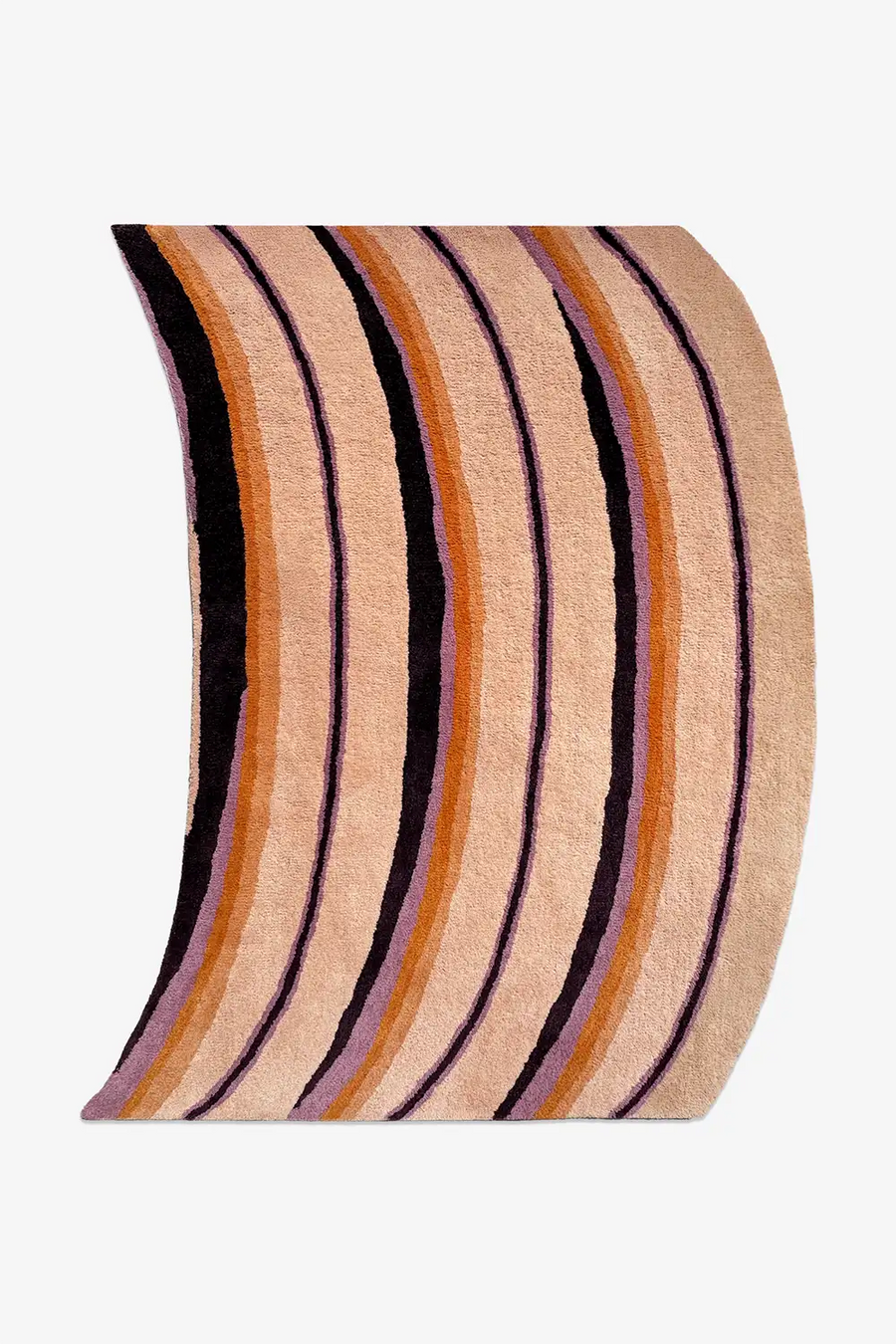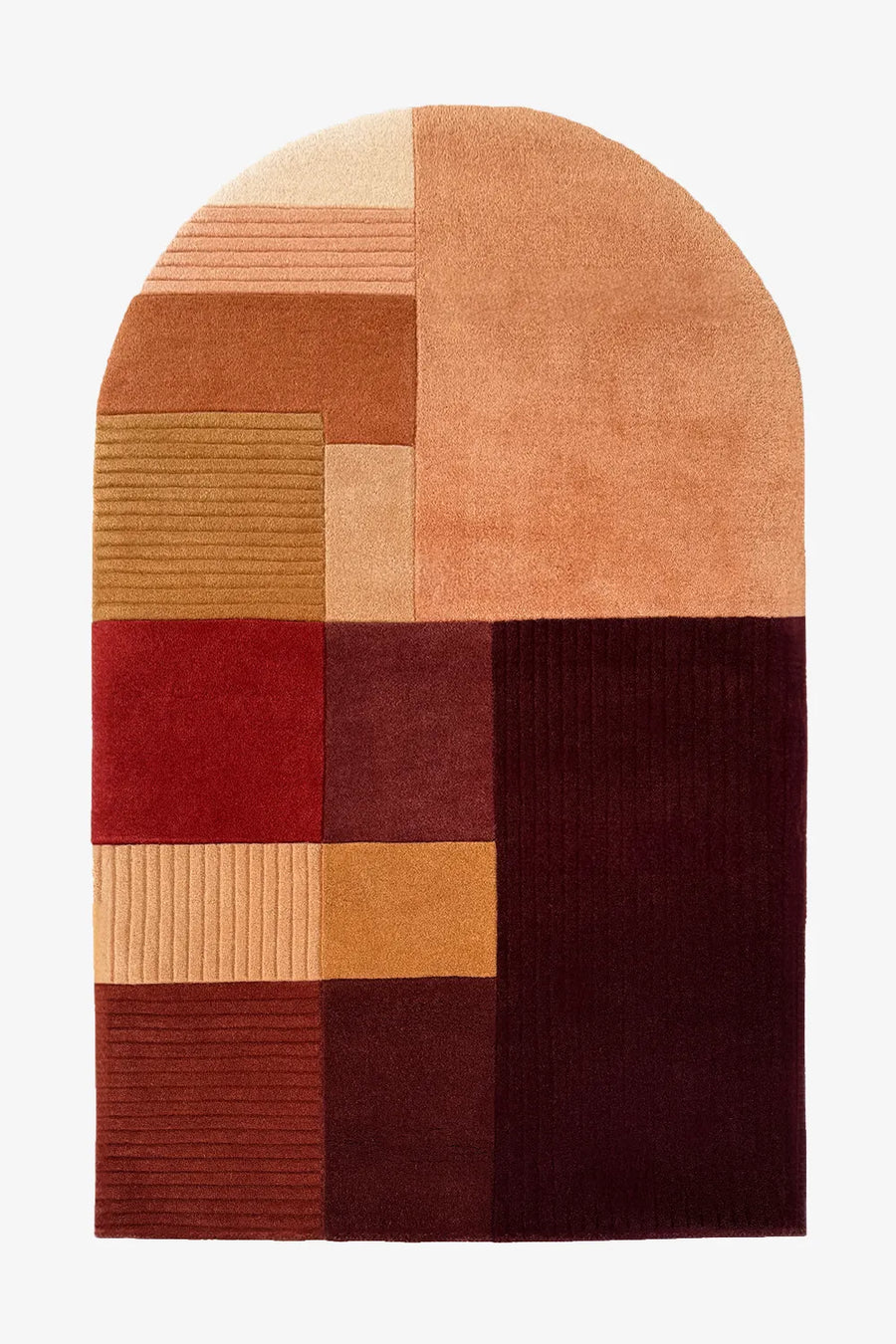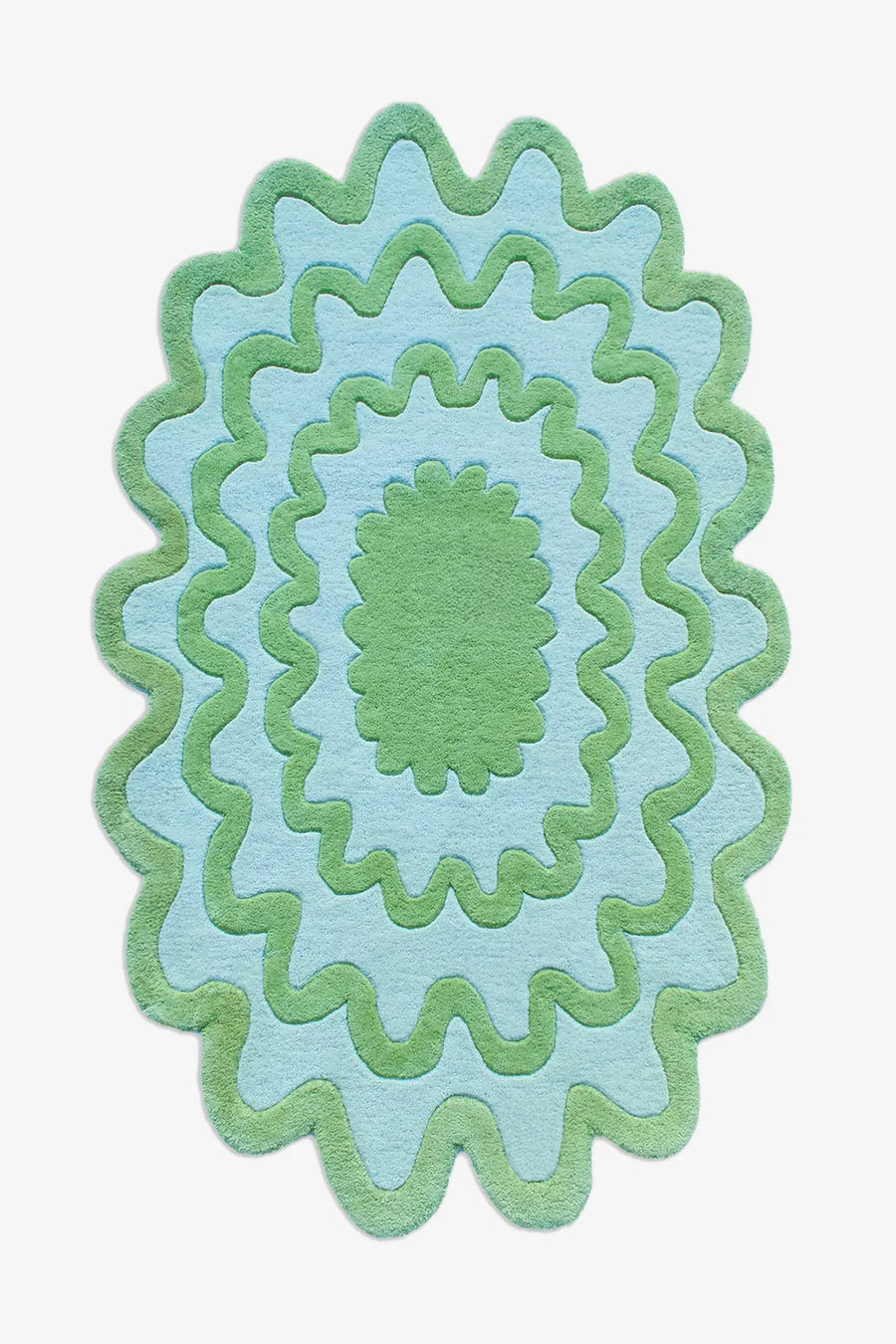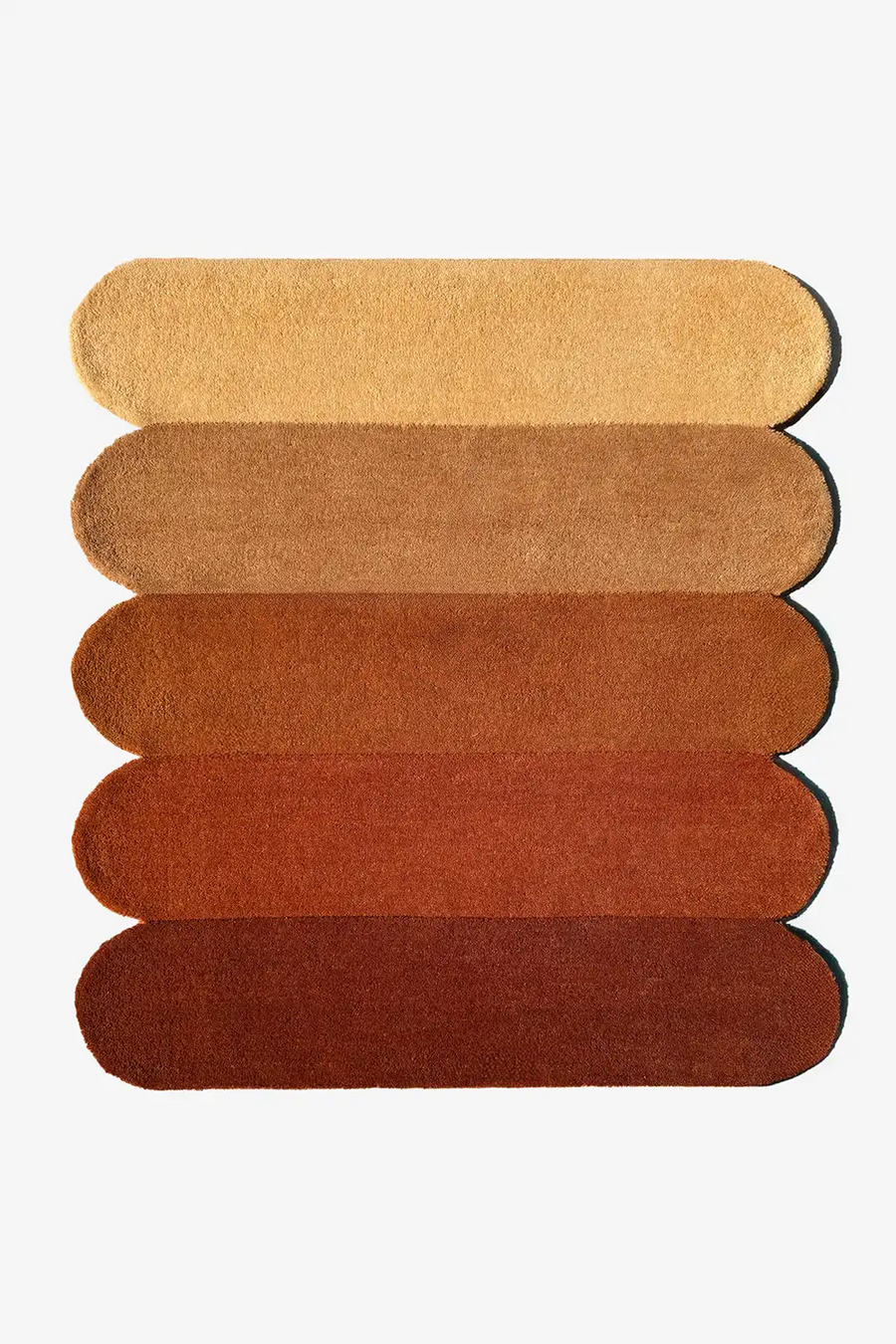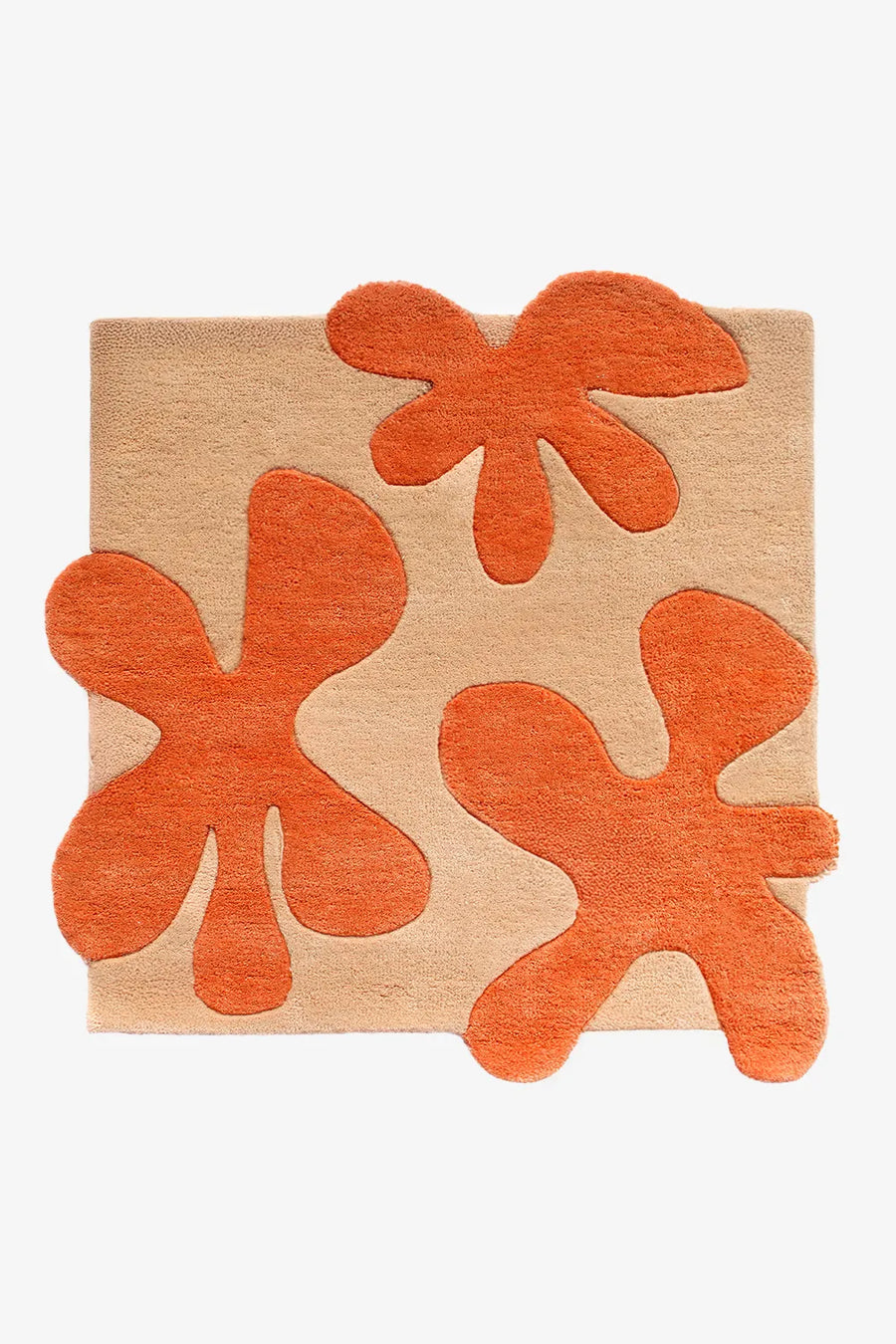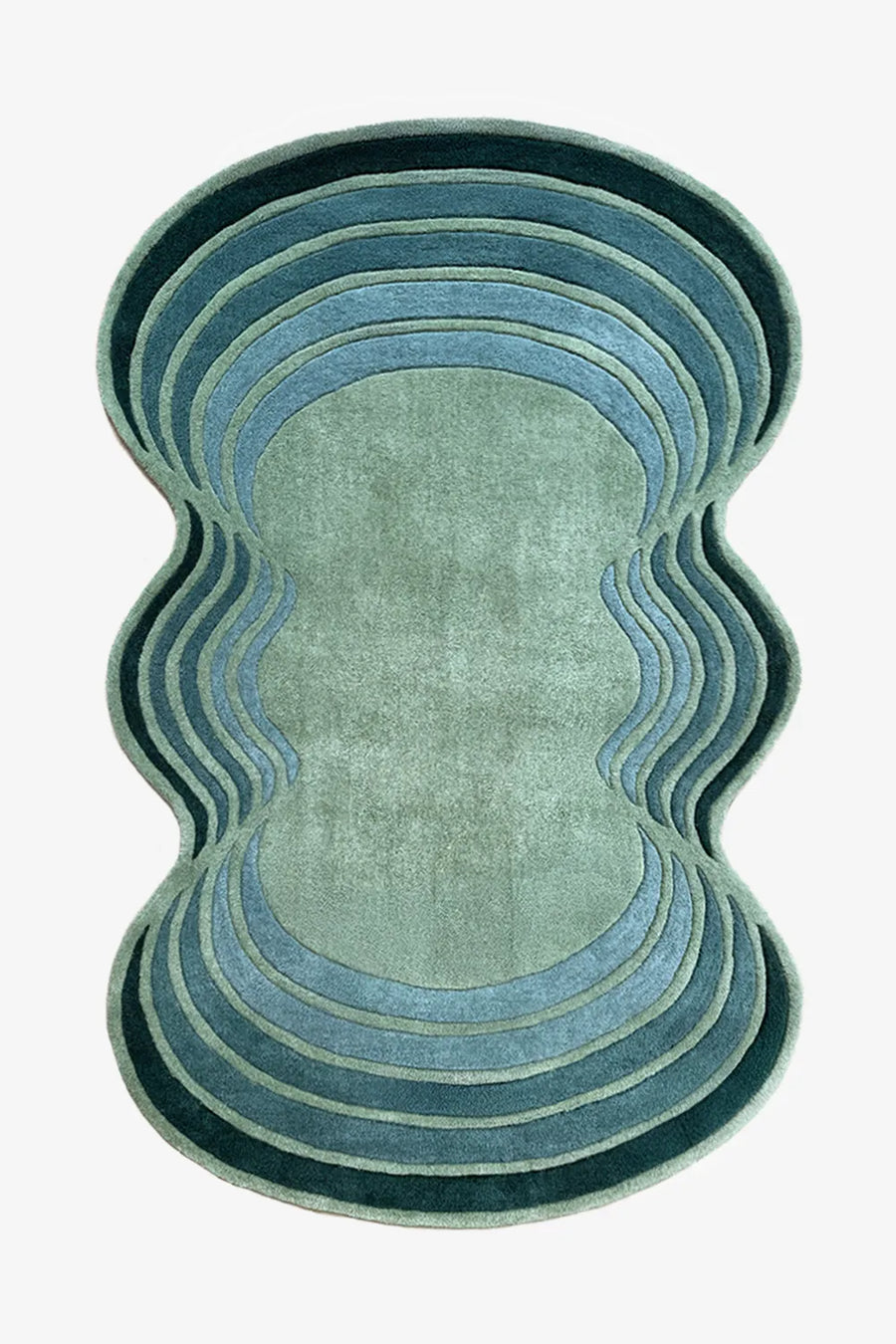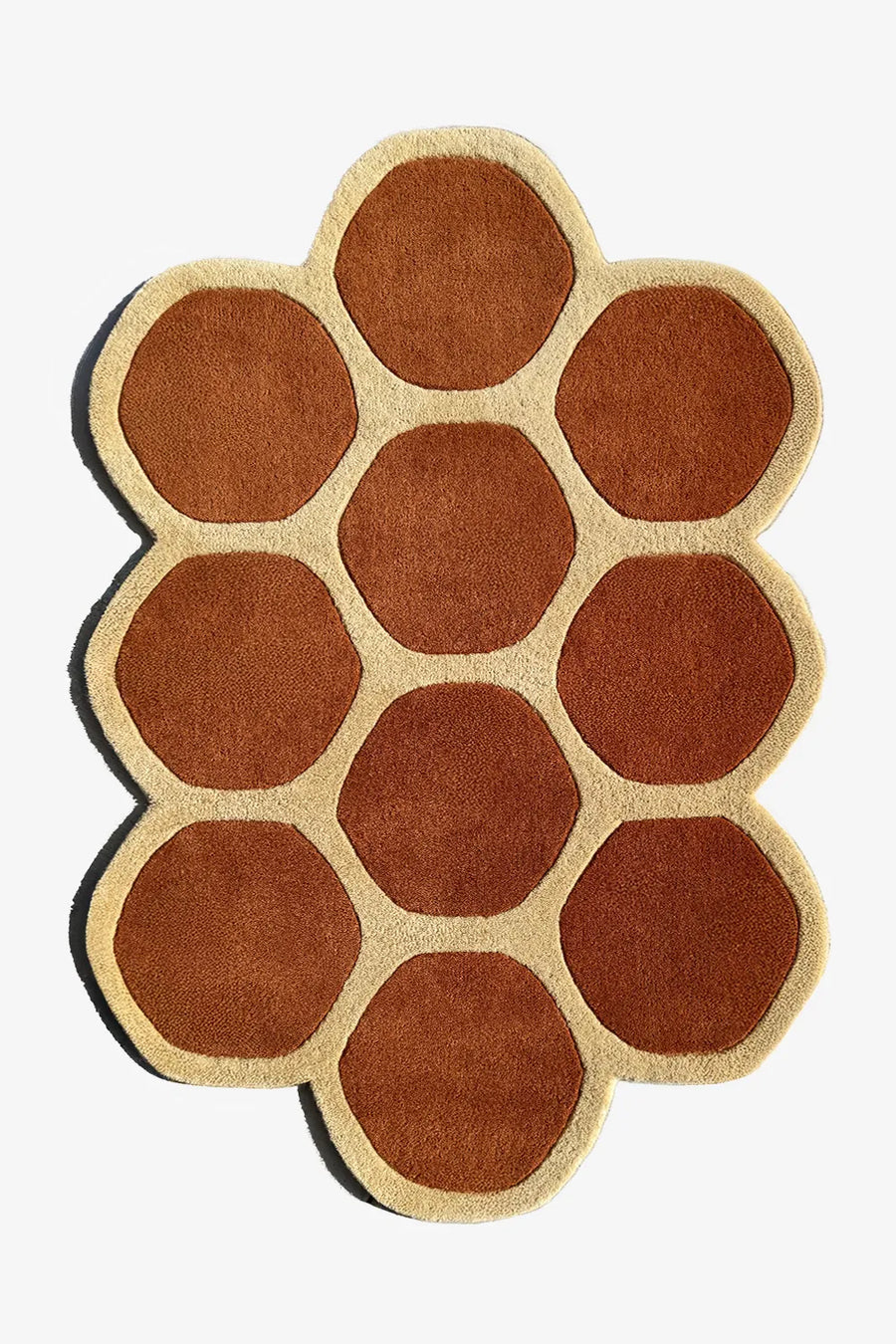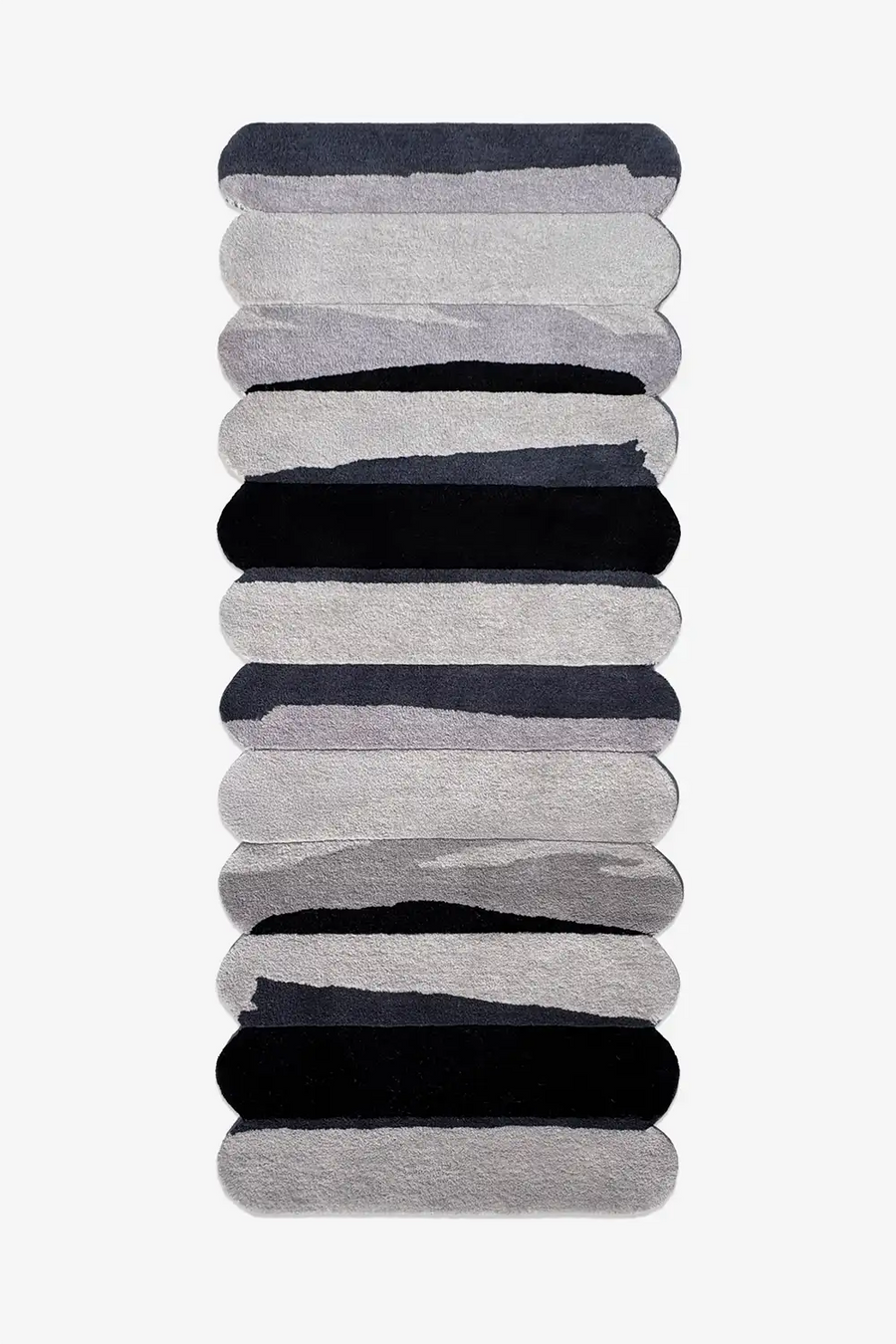Rugs by Size
Every design can be made in any size. Browse popular dimensions below, or request something custom.
Choosing the Right Rug Size
Size matters more than most people realize. A too-small rug makes a room feel disconnected. The golden rule? In living rooms, all front legs of your furniture should sit on the rug, or all furniture should fit completely. For dining rooms, chairs must stay on the rug when pulled out. In bedrooms, rugs should extend at least 18 inches beyond the bed on each side. When between sizes, size up. A larger rug almost always looks better.
All Available Sizes
Every design in our collection can be made in any of these sizes—or any custom dimension you need.
Runner Sizes
Need a size not listed? Request a custom size and we'll make it happen.
Styled Spaces
Unique Shapes & Sizes
Frequently Asked Questions
The most common area rug sizes are 5x7, 6x9, 8x10, 9x12, and 10x14 feet. Runners typically come in 2.5x8, 2.5x10, or 2.5x12 feet. Round rugs are commonly available in 6, 8, or 10-foot diameters. These standard sizes work for most spaces, but custom sizing is available if you need something specific. Start by measuring your space and determining which standard size fits best.
Measure your seating area from the front of your sofa to the front of any chairs or other furniture. Your rug should be large enough for all front furniture legs to sit on it, or ideally, all furniture should fit completely on the rug. For most living rooms, an 8x10 or 9x12 works well. Leave at least 12-18 inches of floor visible between the rug edge and walls. Use our living room rugs guide for more specific measurements.
Measure your dining table and add at least 24 inches (preferably 30 inches) on all sides. This ensures chairs remain on the rug when pulled out. For a standard 6-person rectangular table (36x72 inches), you'd need at least an 8x10 rug. For an 8-person table, consider a 9x12 or larger. This is one area where you absolutely cannot go too small—undersized dining room rugs are frustrating to use.
Always go bigger. A too-large rug can be intentionally placed to work in a space. A too-small rug looks like a mistake—it makes furniture appear disconnected and the room feel unfinished. When you're between sizes, size up. The only exception is very small spaces where a massive rug would overwhelm, but even then, a slightly larger option usually works better than you'd expect.
Yes. If standard sizes don't work for your space, many rug makers (including us) offer custom sizing. This is especially helpful for unusually shaped rooms, very large spaces, or when you need a specific dimension to work with your furniture layout. Custom sizing typically adds production time and cost, but it ensures the rug fits your space perfectly.
In most rooms, leave 12-24 inches of floor visible between the rug edge and the walls. This creates a visual "frame" and prevents the room from feeling cramped. In smaller rooms, 12 inches works. In larger rooms, 18-24 inches looks more proportional. The exception is wall-to-wall rugs in small spaces like home offices or bedrooms, where covering most of the floor can actually make the space feel larger.
The Complete Guide to Choosing the Right Rug Size
Why Size Is the Most Important Decision
You can choose the perfect color, pattern, and style, but if the size is wrong, the rug won't work. A too-small rug makes furniture look disconnected and the room feel unfinished. A properly sized rug anchors the space, defines zones, and makes everything feel intentional. Size affects furniture placement, room flow, and visual balance. Getting it right is non-negotiable. The good news? There are clear guidelines that make choosing the right size straightforward.
Understanding Standard Rug Sizes
Most rugs come in standard sizes that work for typical room dimensions. Common rectangular rug sizes include 5x7, 6x9, 8x10, 9x12, and 10x14 feet. Runners typically come in 2.5x8, 2.5x10, or 2.5x12 feet. Round rugs are available in 6, 8, or 10-foot diameters. These standards exist because they fit most furniture layouts. A 5x7 works in small bedrooms or as an accent. An 8x10 fits most living rooms. A 9x12 works for larger living rooms or dining rooms. Knowing these standards helps you narrow down options quickly.
Living Room Sizing: The Furniture Rule
In living rooms, your rug should be large enough for all front furniture legs to sit on it, or ideally, all furniture should fit completely on the rug. Measure from the front of your sofa to the front of any chairs or other furniture across from it. Add at least 6 inches on each side. For most standard living rooms, an 8x10 or 9x12 rectangular rug works. If your sofa is against the wall, the rug should still extend beyond the coffee table. Leave 12-18 inches of floor visible between the rug edge and walls. This creates breathing room and prevents the space from feeling cramped.
Bedroom Sizing: The 18-Inch Rule
In bedrooms, place the rug under the lower two-thirds of the bed with at least 18 inches (preferably 24 inches) extending on each side and at the foot. This ensures you step onto the rug when getting out of bed. For a queen bed, an 8x10 or 9x12 rug works well. For a king bed, consider a 9x12 or larger. If your bedroom is small, runners along each side of the bed or a smaller rug at the foot can work. You can also use a round rug in a corner or at the foot of the bed for a softer look.
Dining Room Sizing: The Chair Rule
Dining room rugs must extend at least 24 inches (preferably 30 inches) beyond the table on all sides. This is non-negotiable. Chairs need to remain on the rug when pulled out, or the dining experience becomes frustrating. Measure your table, add 48-60 inches to both length and width, and that's your minimum rug size. For a standard 6-person rectangular table (36x72 inches), you need at least an 8x10 rug. For an 8-person table, a 9x12 or 10x14 works. For round tables, measure the diameter and add 48-60 inches. Don't compromise on dining room rug size—too small ruins functionality.
Hallway and Entryway Sizing: Runners and Proportions
Runners in hallways should be 6-12 inches narrower than the hallway width and extend most of the length, leaving about 12 inches of floor visible at each end. A runner that's too narrow looks like a stripe. One that's too wide touches baseboards and looks cramped. Standard runner sizes are 2.5x8, 2.5x10, or 2.5x12 feet. For entryways, choose a rug that fits the space without overwhelming it—typically 3x5, 4x6, or 5x7. Entryway rugs should be large enough to feel intentional but not so large they extend into adjacent rooms.
Home Office Sizing: Desk and Chair Clearance
In home offices, your rug should be large enough to fit your desk and chair with clearance for the chair to roll. Measure your desk footprint and add at least 24-36 inches on all sides where the chair will move. For most desks, a 6x9 or 8x10 rug works. If you have a large L-shaped desk, consider a 9x12. Use rectangular or square shapes for structure and professionalism. Avoid rugs that are too small—a rug that only fits under the desk but not the chair creates a frustrating work environment.
Layering and Oversized Rugs
Layering rugs can solve sizing challenges or add visual interest. Place a smaller, decorative rug over a larger neutral one for dimension and texture. Oversized rugs that nearly fill a room can actually make small spaces feel larger by minimizing visible floor. In bedrooms and offices, wall-to-wall coverage (leaving just 6-12 inches of floor visible) creates coziness. This approach works best with solid or subtle abstract patterns that don't overwhelm.
The "When in Doubt, Go Bigger" Rule
Almost always, the larger option is the better choice. A slightly oversized rug can be intentionally placed and styled. A too-small rug always looks like a mistake. When you're between a 5x7 and an 8x10, choose the 8x10. Between an 8x10 and a 9x12, go with the 9x12. The only exceptions are very small rooms where a massive rug would genuinely overwhelm the space, but even then, test the larger size before ruling it out. Our eyes are more forgiving of "too big" than "too small."
How Size Interacts with Shape and Pattern
Size and shape work together. A large rectangular rug grounds a space. A small round rug creates a focal point. Pattern also matters—large-scale patterns need more space to be appreciated, while small, busy patterns can feel overwhelming on oversized rugs. A bold geometric or multicolor design works best on a properly scaled rug where the entire pattern is visible.
Measuring Tips Before You Buy
Before purchasing, measure your space carefully. Use painter's tape to outline the rug dimensions on your floor. Live with it for a day or two. Does it feel right? Does furniture fit the way you expected? This simple step prevents expensive mistakes. Take photos from different angles to see how the size reads visually. Measure doorways and stairways to ensure the rug can be delivered. And always double-check dining room measurements—this is the most common place people undersize.
Custom Sizing for Unique Spaces
If standard sizes don't work, custom sizing is available. This is especially useful for unusually shaped rooms, very large spaces, or specific furniture layouts. Custom rugs take longer to produce and typically cost more, but they ensure a perfect fit. Consider custom sizing for open floor plans where you need to define zones, irregularly shaped rooms, or when you want a rug that extends wall-to-wall with specific clearances.
Final Thoughts on Rug Sizing
Size is the foundation of a successful rug choice. Get it right, and everything else falls into place. Get it wrong, and even the most beautiful rug won't work. Measure carefully, understand the guidelines for your specific room, and when in doubt, go bigger. A properly sized rug transforms a space. An undersized one makes it feel incomplete.











